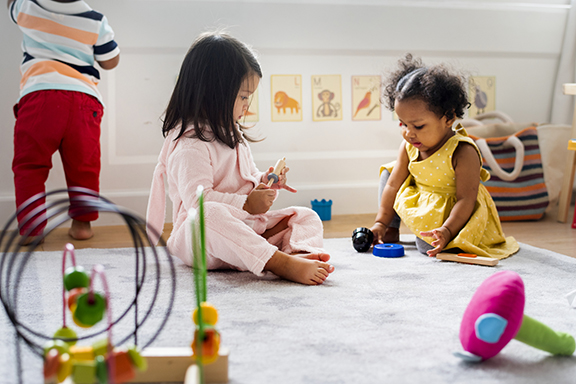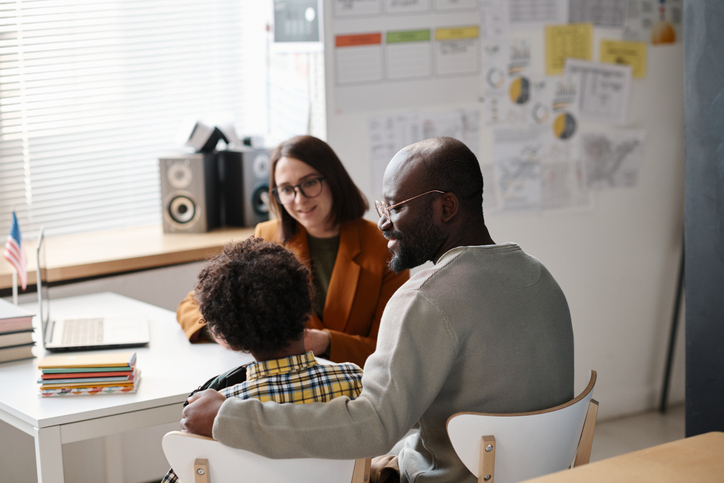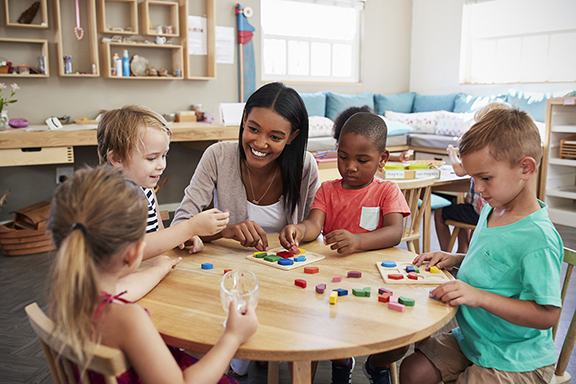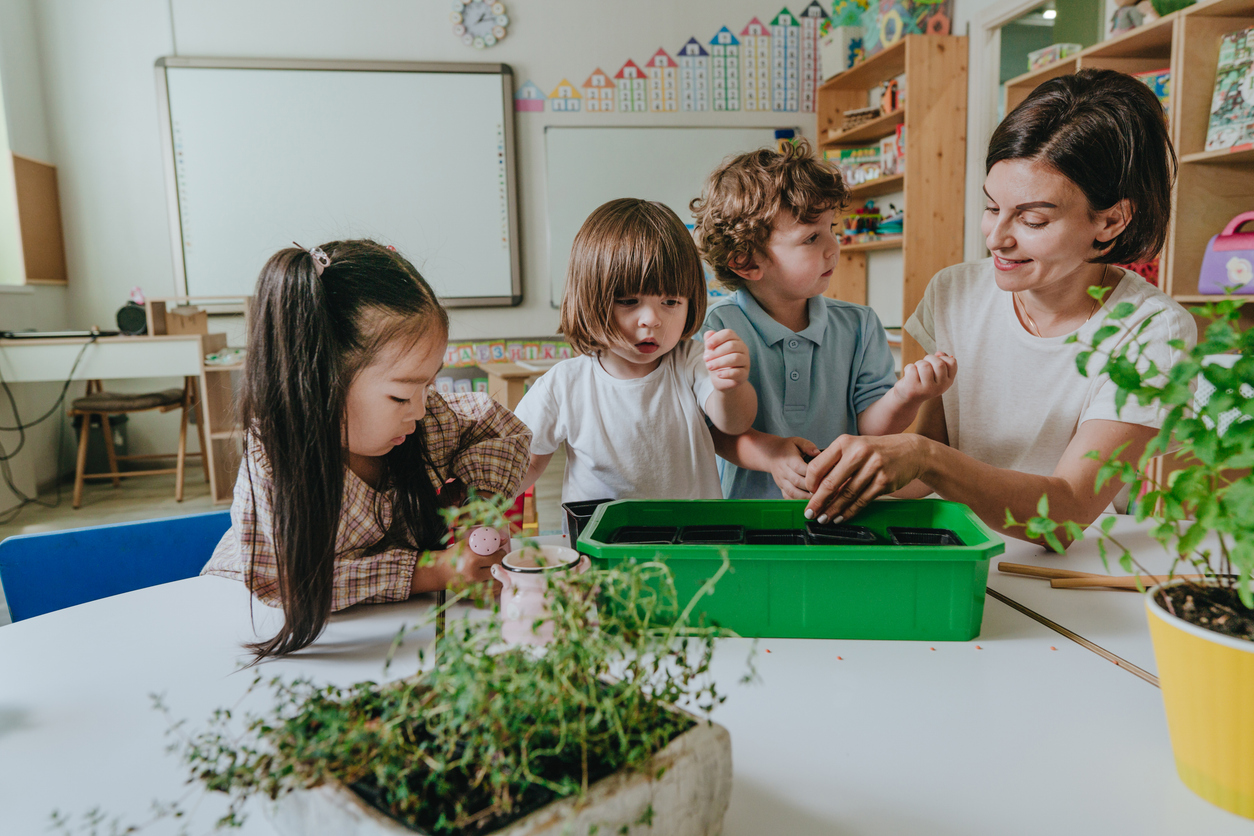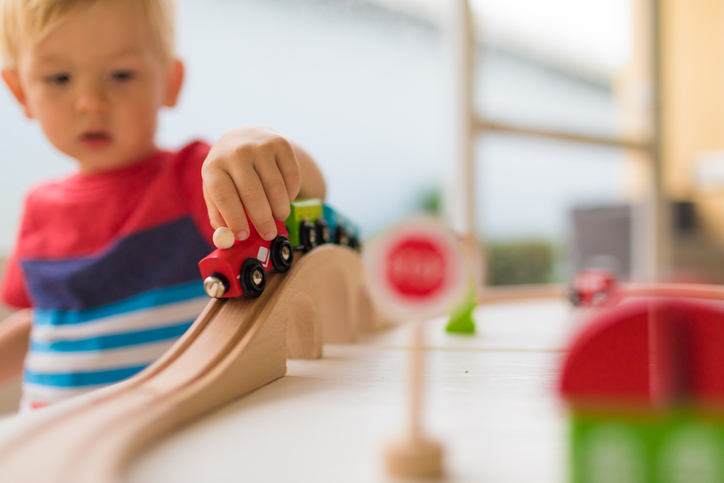School for Babies?

Susan Birnbaum, Director, Children’s All Day School & Pre-Nursery
When one thinks about infants, specific images most likely come to mind: cuteness, cooing sounds, soft roly-poly bodies and crying, lots of crying. What doesn’t come to mind is infants learning about physics, chemistry and mathematical concepts—and certainly not infants learning how to read. Yet, all of this is possible and most definitely occurs when a baby goes to school.
Let’s start at the beginning. It was once believed, based on research conducted in the 80s and 90s, that babies were able to mimic and imitate behavior minutes after birth. In the experiments conducted, researchers stuck out their tongues in view of newborns. The study tried to show that those newborns who were shown this protruded their tongues more frequently than those who were not. However, it was later concluded that babies weren’t imitating any other facial expressions nor was there cause and effect directly linked to increased tongue protrusion.
Yet, babies do indeed learn to imitate very early on so what accounts for this phenomenon? While infants may not start to imitate at birth, they are born with the innate ability to learn. In one study, conducted by Virginia Slaughter of the University of Queensland in Australia, it was shown that new moms imitate their babies every two minutes. Babies learn to imitate facial expressions within two to three months after birth because they have learned to do so from their moms and caregivers. So the cycle of teaching and learning begins when babies are born. They can indeed learn all sorts of amazing things.
Born Scientists
According to author and astrophysicist, Carl Sagan, “all kids are born natural scientists.” At our school, we agree that babies are scientists by nature and are ready to learn in a school setting around the age of 6 months, when sitting up typically begins.
The first piece of real evidence we have that babies are born scientists—not just students ready to learn and, more important, capable of learning—occurs when babies repeat actions that involve cause and effect. A baby will use his chubby little foot to kick a button on his toy in his crib: Voila! It makes a sound. The baby enjoys this sound or just enjoys the effect of it so he tries it again. Success! He gets the sound to come again. Repeating this kicking gesture over and over not only pleases the baby and makes him smile but it teaches him cause and effect.
Let’s look at this from the baby’s point of view and give him language to share what he thinks:
Baby: When I kicked the button, music played! Will it happen each and every time?
Baby kicks again: Yes! I did it. I made the sound again by pushing my foot on the button. Will it happen again? (Baby experiments.)
Baby kicks again: I made the music happen! I am brilliant! I bet if I kick the button again, it will play me music. (Baby forms a hypothesis.)
Baby kicks it again.
Babies are born to observe, research, form hypotheses, experiment and draw conclusions. They figure out how to put a small cup into a big one when they experiment. What does water feel like? How about some shaving cream? Babies research to find answers to these questions.
Little Observers
Let’s look at another scenario: A baby who can sit up can hold a stuffed animal dog and, at the same time, eye a real dog that walks past her. The baby looks at her stuffed dog and looks at the real dog, looks at the stuffed dog and then again at the real dog.
What is this baby doing? She is studying. Yes, that’s right: this baby is very busy observing and comparing inanimate versus animate objects. Now, it is doubtful the baby will announce this fact, but indeed that is what she is doing. She can repeat comparing and contrasting for quite some time as she absorbs new information and attempts to make sense of it all.
Infants study all sorts of things using all five senses on a regular, ongoing basis. They use touch and taste to learn about hot and cold. They use touch and sight and taste to determine shape and size. Babies are terrific observers, with brains that are as elastic and expanding in ways they will not experience quite the same way again for the rest of their lives.
An infant’s brain is often compared to a sponge. However, after years of spending time with infants and toddlers, I think this analogy is inadequate. I believe that, unlike a sponge, a baby’s brain can’t be filled but has unlimited capacity. And if I am correct, then we have an obligation to teach those baby brains and expose them to different concepts, skills and strategies they can use throughout their lives.
Inside the Classroom
Desks and chairs, blackboards, whiteboards and textbooks … children bent over math worksheets, in reading groups, memorizing state capitals: all of these come to mind when we conjure up an image of “school.” What is most important in the classroom, however, is students with the foundation of academic skills and strategies necessary to successfully learn new information.
What would mathematics look like for infants? What about literacy and science? Assuming that babies can learn and do indeed learn on their own when they mimic or observe, then it isn’t a matter of whether babies should go to school, it is about what and how they should learn while there.
Let’s take a look at an example of the mathematics instruction we typically engage in at our school. It is snack time and the babies are all in their highchairs. As we placed them in their chairs, we told them there is one chair for each of them. While we pass out Cheerios, we say, “One for you and one for you.” In this simple act of eating their snack, infants are exposed to and learn one-to-one correspondence, a concept that applies to all areas of mathematics.
Now that the infants have eaten all their snack, they have lots of energy. Teachers decide these babies need some physical activity before going into their cribs for their nap. All of them are mobile, either walking or crawling, and all sit up independently. Each baby student is given a ball. Teachers hold up pieces of cardboard with different-shaped holes cut out of them and encourage the babies to throw their ball through them. Will it fit through the square hole? How about the triangle? Well, let’s try that round hole. Triumph! Why did the round ball fly through the round hole without issue? Let’s take a look at the attributes of shapes and figure this out.
Reading, Writing and More
It is believed that 55 percent of communication is conveyed through body language, facial expression and gestures. The earliest literacy skill for infants is the ability to read facial expressions. As their teachers converse with them and each other, narrate daily events, read to them and take them on trips, they learn to communicate and ascribe meaning to what they notice in their environment. This is how the foundation for literacy is built.
Music plays an important role in infant education, particularly with respect to literary objectives and goals. Just like reading, music entails small pieces of sound, contextual clues, patterns and vocabulary. Infants can listen to music while crawling through a cardboard box from which dozens of little lights poke through. Science, literacy and gross motor skills are all being developed in just one activity. Engaging as many senses as possible in this way helps babies make strong connections and develop their short-term memory and perception.
Infants learn early writing skills by “painting” with ice, using the pincer grip to pick up their snack foods, and rolling a car dipped in paint over paper. Watching a balloon float over a fan, they discover wind and receive an early lesson in the laws of physics. Every activity—whether it’s listening to different animal sounds or choosing a toy to explore—can be designed to help infants gather school readiness skills.
Above All: Social-emotional Skills
For me, the most important learning domain is that of social-emotional development. If you can’t learn to sit and focus, you cannot learn to read. If you can’t get along with others, you cannot get a job (unless, of course, you work from home). Our emotions can stop us from learning and doing what we need to do.
It is at school that we learn to get along with others, and to develop and negotiate relationships. Infants who attend school are exposed to all sorts of relationships they may not otherwise have encountered so early on. They learn to rely on multiple caregivers, and are stimulated by their peers they get to see each day—at the same time as they develop their own independence.
There are so many different and exciting ways to teach infants. And they are so ready to learn.
School for babies? Absolutely.
Susan Birnbaum is Director of Children’s All Day School & Pre-Nursery, a yearlong full-day school for children ages 6 months to 5 years in Manhattan.
This article first appeared in the 2023 issue of the Parents League Review. Get the current issue of the Review free with a family membership. Or purchase it separately.





